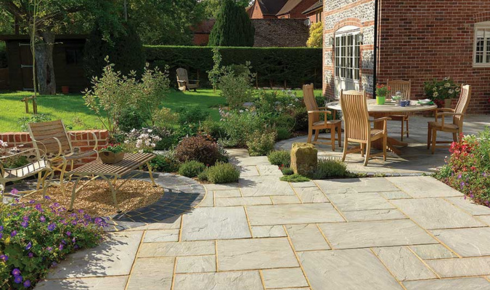When it comes to creating elegant, durable, and naturally beautiful outdoor spaces, few materials can rival the appeal of sandstone paving. Whether used for patios, garden paths, courtyards, or driveways, sandstone offers a perfect blend of style and substance. Its warm, earthy tones and textured surfaces make it a popular choice among homeowners, architects, and landscapers who seek both functionality and aesthetic charm.
What is Sandstone Paving?
Sandstone is a sedimentary rock formed over millions of years by the compression of sand and minerals. Its unique grainy texture, natural clefts, and rich variety of colors—from pale cream and golden hues to deep greys and reds—make it ideal for outdoor applications. Sandstone paving is cut into slabs or tiles of various sizes and finishes, offering a wide range of options to suit both contemporary and traditional designs.
Key Benefits of Sandstone Paving
1. Natural Beauty:
One of the biggest advantages of sandstone paving is its timeless appearance. Each slab features a unique pattern and shade, ensuring your outdoor area has a natural, one-of-a-kind finish. Its organic look blends seamlessly with gardens, lawns, and greenery, enhancing the outdoor ambiance.
2. Versatility in Design:
Available in multiple sizes, colors, and finishes—such as riven, sawn, or tumbled—sandstone paving can be laid in various patterns including random, linear, or uniform layouts. This adaptability allows for custom designs that suit your specific vision and space.
3. Durability:
Sandstone is known for its strength and weather resistance. When properly sealed and maintained, sandstone paving can withstand harsh climates, heavy foot traffic, and general wear and tear for many years. It’s especially well-suited to areas that experience extreme seasonal changes.
4. Slip Resistance:
Due to its natural surface texture, sandstone provides excellent grip, even in wet conditions. This makes it an ideal choice for outdoor areas like pool surrounds, walkways, and steps where safety is a concern.
5. Eco-Friendly Option:
As a natural product, sandstone has a lower environmental impact compared to synthetic alternatives. Many sandstone quarries follow sustainable extraction practices, and the material itself is recyclable, adding to its eco-friendly appeal.
Where to Use Sandstone Paving
Sandstone paving is incredibly versatile and works well in a variety of settings:
- Patios and Courtyards: Its natural elegance and comfort underfoot make it a favorite for outdoor living spaces.
- Garden Pathways: Sandstone paths add structure and charm, guiding visitors through your landscape with rustic appeal.
- Driveways and Entrances: When laid with the proper thickness, sandstone can handle vehicular traffic while offering a welcoming first impression.
- Pool Surrounds: Thanks to its cool touch and non-slip surface, sandstone is excellent around pools or water features.
Maintenance and Longevity
While sandstone is relatively low maintenance, a few simple practices will keep it looking its best:
- Sweep regularly to prevent buildup of dirt and debris.
- Wash occasionally with water and mild detergent.
- Apply a high-quality sealant every few years to protect against stains, algae, and weathering.
With proper care, sandstone paving can retain its beauty and integrity for decades, making it a wise long-term investment for any outdoor project.
Customization Options
Another key reason for sandstone’s popularity is the variety of custom options it offers. You can choose from hand-cut edges for a rustic look or machine-sawn edges for a cleaner, modern aesthetic. Additionally, sandstone pairs well with other materials like brick, gravel, or wood to create multi-textured, visually dynamic spaces.
Conclusion
Sandstone paving is more than just a practical surface—it’s a statement of style and quality. Combining durability, beauty, and design flexibility, it offers an ideal solution for homeowners who want to enhance their outdoor areas with a touch of nature. Whether you’re revamping a small patio or designing an expansive landscape, sandstone paving is a timeless choice that delivers both visual impact and enduring performance.

